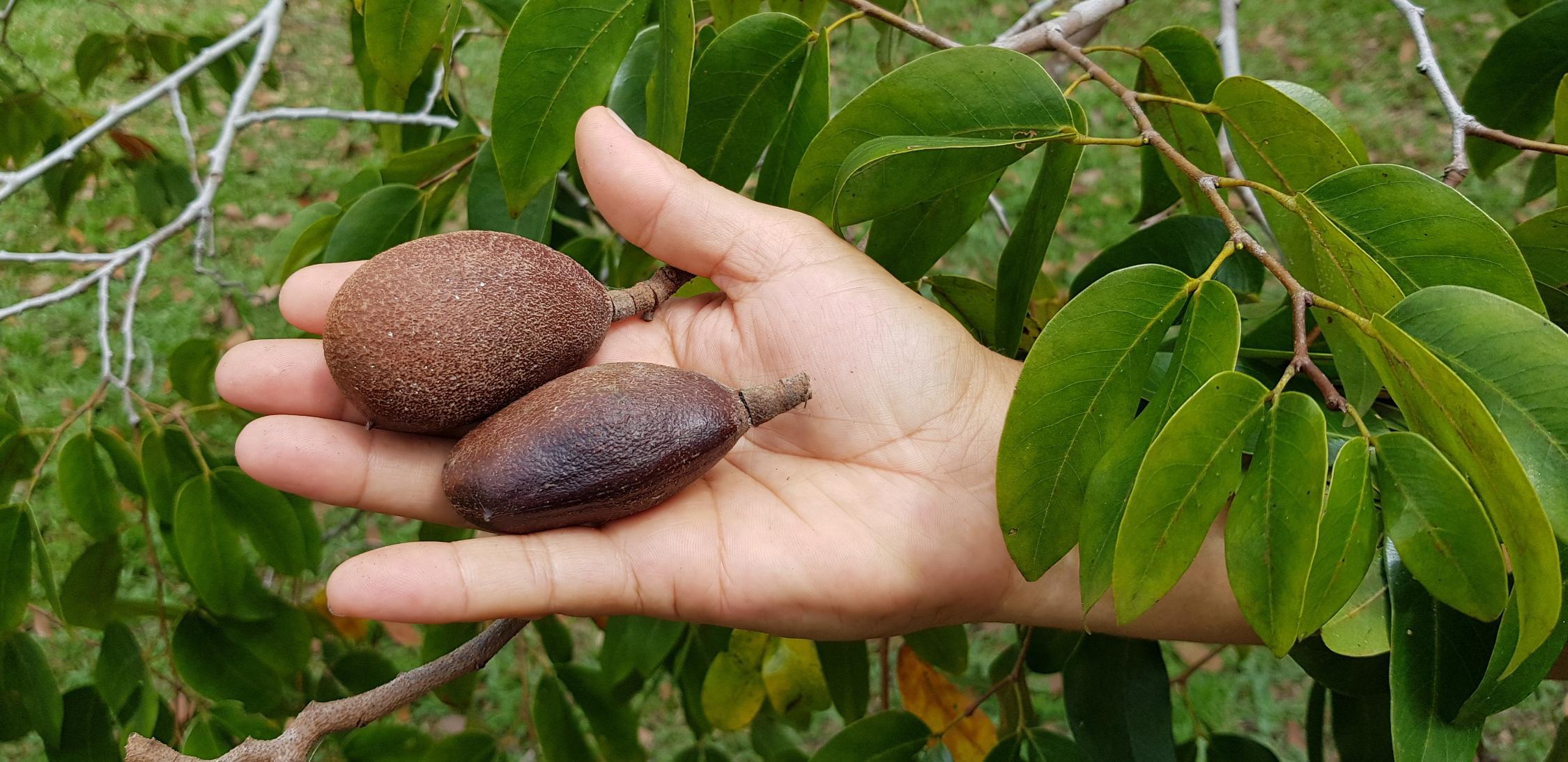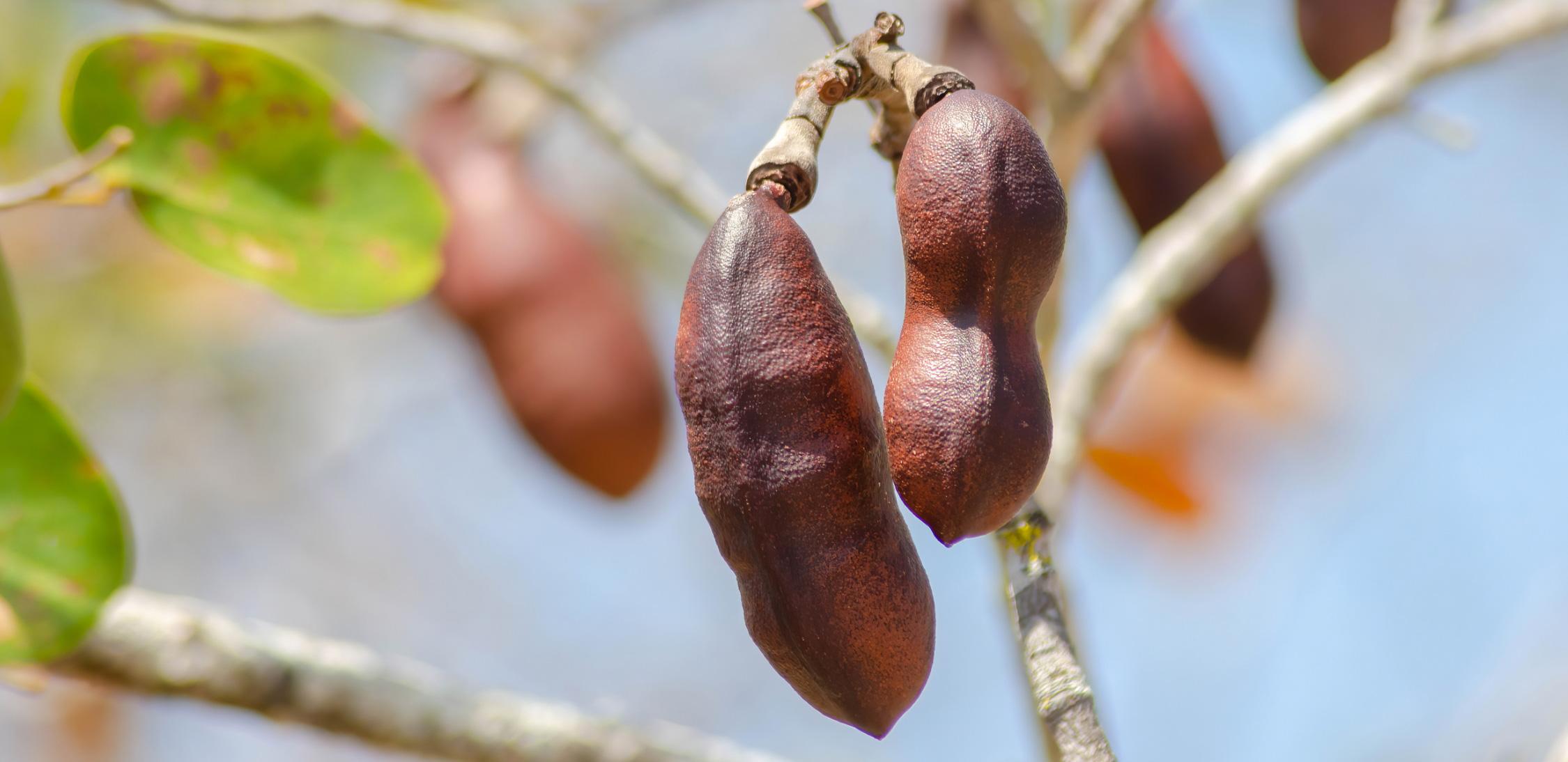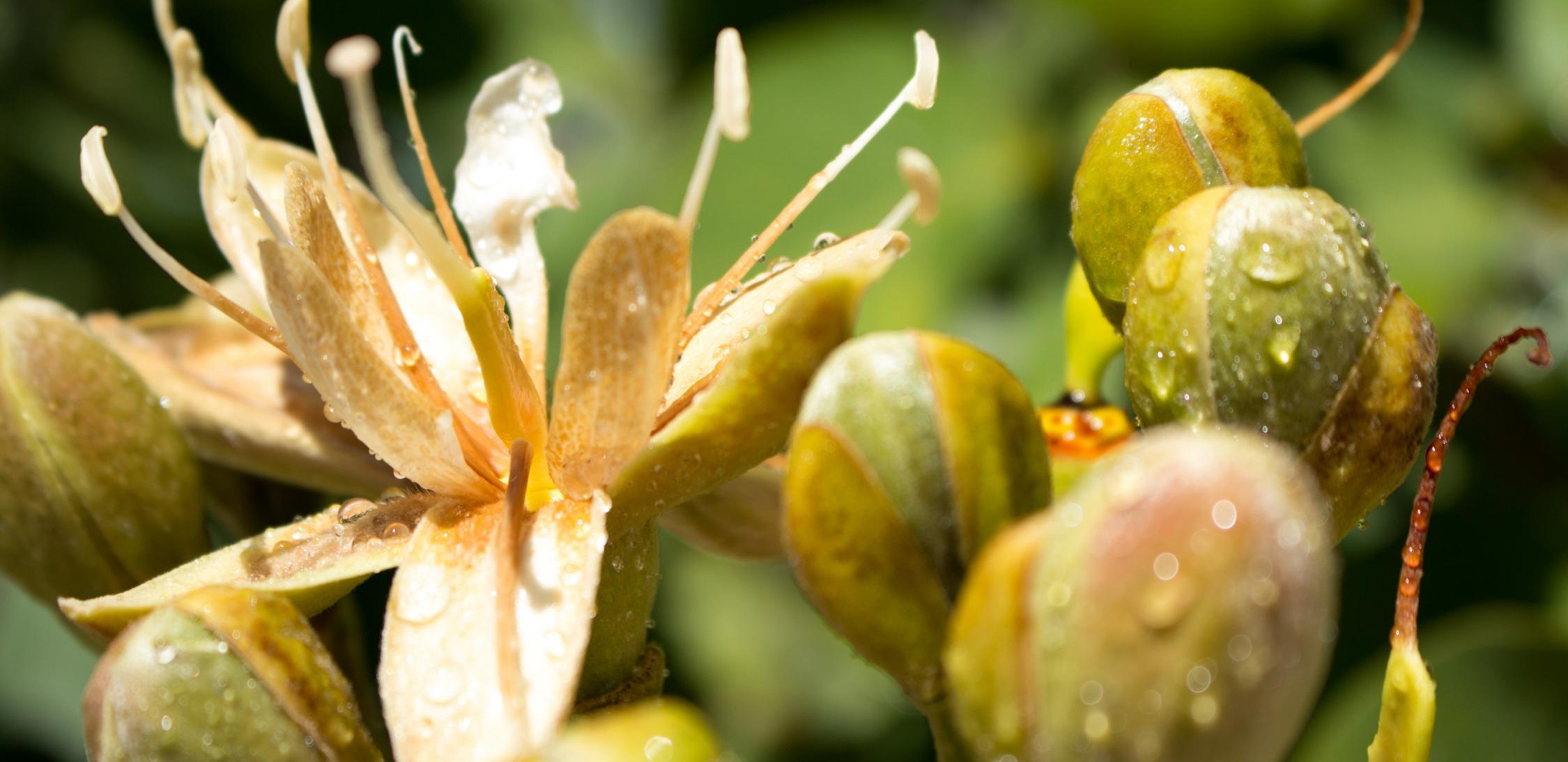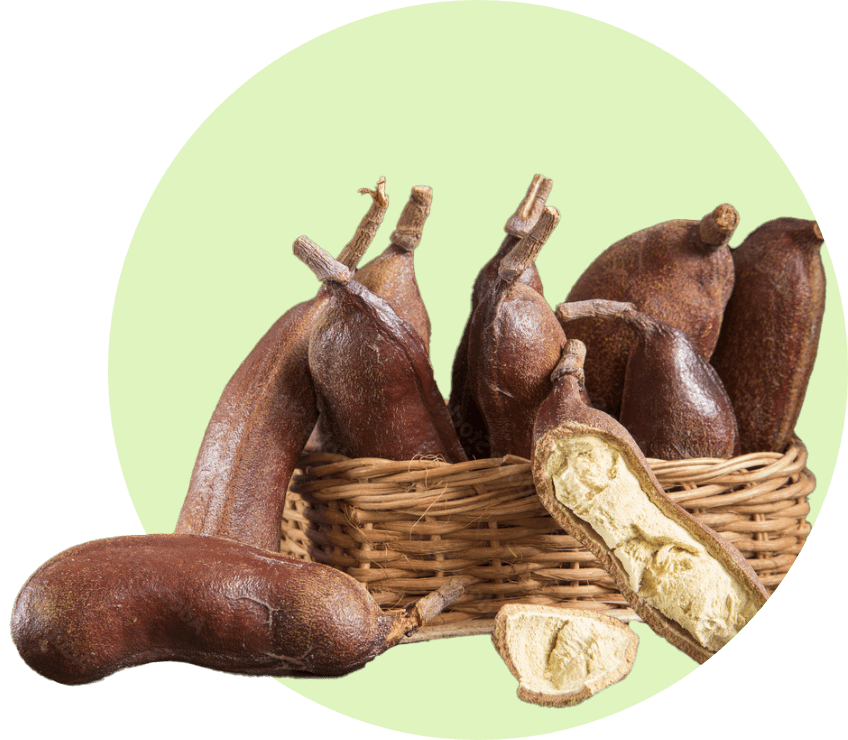
West Indian Locust Tree / Brazilian Copal
Scientific Name: Hymenaea courbaril
Origin: South America
Botanical Family: Caesalpinaceae
Algarrobo is a tropical American tree known for its large pods, nutritional fruit, and commercial wood.
Brief History and Description
Algarrobo is a very large tree native to tropical America. It can grow up to 40-50 meters, with huge trunks and a big canopy. Algarrobo fruit is inside a large brown pod shaped like a toe. The pod shell is very hard. When the pod shell is broken, the smell is released. Inside the shell is a lump of powdery meat. Its texture is very dense and dry.
Culinary Usage and Nutritional Properties
Algarrobo tree fruit is rich in vitamin A and iron. It also contains protein, calcium, phosphorus, ß-carotene equivalent, thiamine, riboflavin, niacin, and ascorbic acid. The leaves, cortex, and roots contain tannins, glycosides, and sesquiterpenoids. The fiber obtained from the Algarrobo tree can be used as a food ingredient for the preparation of products rich in fiber, such as bread, cookies, pasta, and others. Algarobo fruit "flour" can be added to baked goods or smoothies. The pulp is used to prepare a sweet beverage. Fruit, raw or cooked, is used for making custards and ice cream. The fruit tastes like cotton candy, so it's a favorite with children as well as with many birds and wildlife.
Economic and Environmental aspects
The Algarrobo, a perennial evergreen, plays a beneficial role in sustaining our environment. This plant can fix nitrogen. In pastoral silo systems, where the trees provide shade for cattle in the middle of planted meadows, the tree might be a useful feature.
Algarobo wood is one of the most important commercial wood species in the world. Even when the tree dries out and dies, the wood of the Algarobo tree does not decay. Timber in Colombia can be commercially harvested from native or planted forests.
Annual Yield
A Jatoba tree produces about 50–100 kg of fruit per year.
Pharmacological Activities and Bio-active Properties
- Resin, bark, flowers, leaves, and fruits contain chemical substances with known biological activity against bacteria, molds, yeasts, and mollusks,
- The fruit is very low in calories and high in carbohydrates,
- They have been said to be an appetite enhancer and an aphrodisiac,
- The flesh of the fruit shows that it has antimicrobial, antifungal, and antibacterial properties,
- Tea made with the bark is used to control intestinal parasites and indigestion and cure urinary infections,
- A liniment made with powdered fruit and bark is used to treat external ulcers or rashes,
- Leaves contain terpenes, tannins, and glycosides, which permit its usage as a fungicide and repellent against some agricultural plagues such as leaf-cutter ants and caterpillars,
- The resin and sap that come out of the holes in the skin are considered tonics,
- The resin and sap from boreholes in the bark are used to treat chronic cystitis, urinary retention, anemia, prostatitis, blennorrhagia, and chronic bronchitis.
Green Your Inbox!
With our Newsletters, Stay updated on our Stories of Change and Growth.
As a gift, get a personalised Nature E-card from PH.





